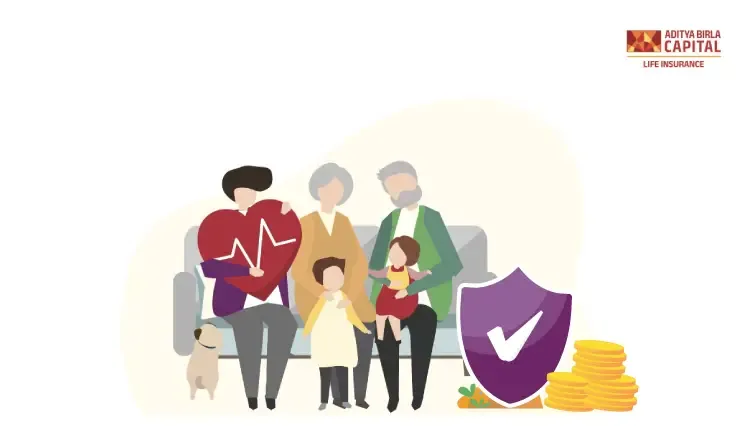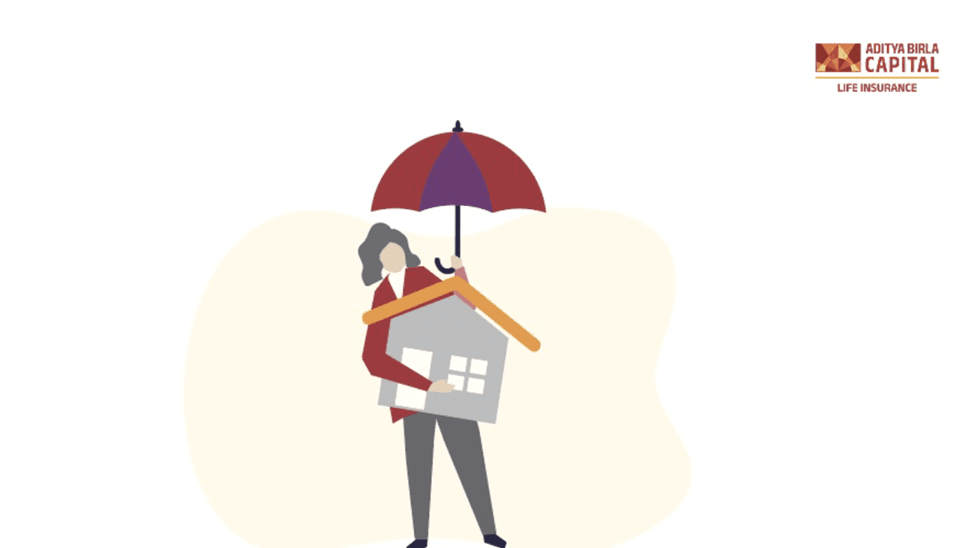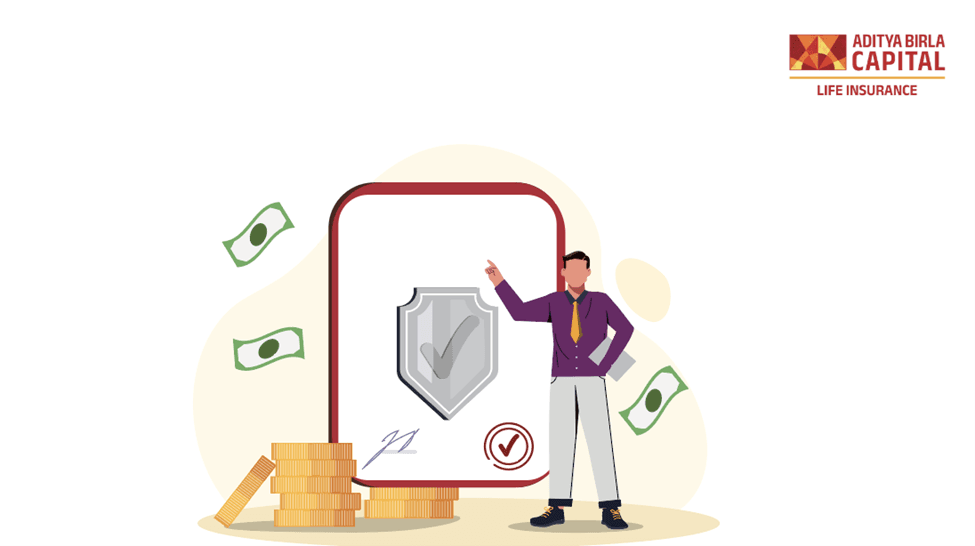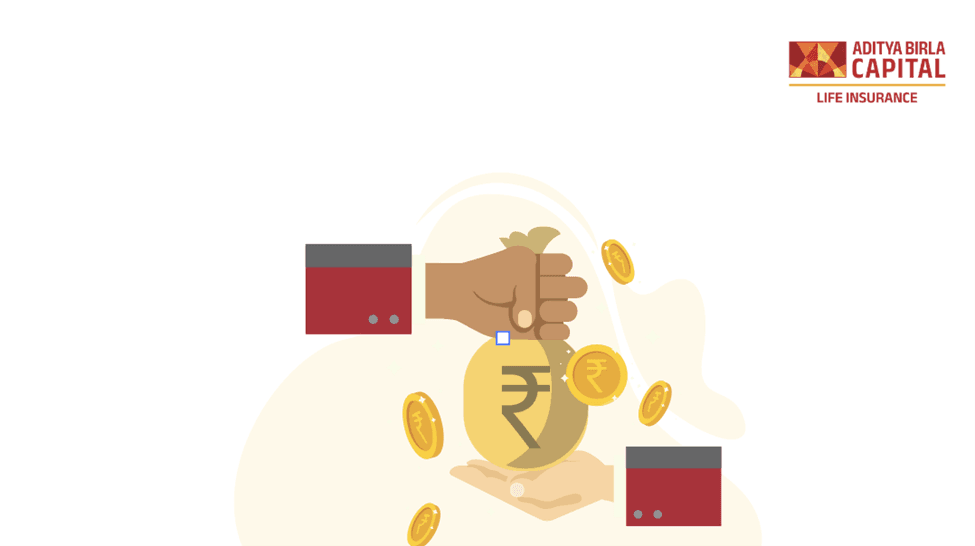Aditya Birla Sun Life Insurance Company Limited
Planning for contingencies: Learn all about building an emergency fund

Plan Smarter, Live Better!

Thank you for your details. We will reach out to you shortly.

Currently we are facing some issue. Please try after sometime.


- Table of Contents
Dreaming of jetting off to Goa with your friends, or planning to buy the newest SUV in the market? Going to move to a new house or switch careers? Whatever big or little things you are looking forward to in life, they all have one thing in common.
And that is the fact that all of them require a solid plan.
That said, there are some things in life that you simply cannot plan for. These unexpected developments may not always be positive either. Some contingencies, like a sudden, major home repair or a health emergency, may not be very easy on your pocket.
For situations like this, you need an emergency fund to fall back on. Also known as a contingency fund, an emergency fund is a part of your personal budget that is set aside for unexpected financial needs. This fund should be liquid and easy to access, so in case of an emergency, you can easily cash in on the emergency money.
Scenarios for which you may need an emergency fund:
The exact scenarios when your emergency fund may prove to be useful cannot be predicted. Plus, the use of an emergency fund varies from one person to another. That said, there are some scenarios that could occur in any individual's life, which warrant the need for a contingency fund.
Let's take a look at some such expenses or situations.
-
A medical emergency
If you or any member in your family falls ill or suffers an accident, the cost of treating the medical emergency could be quite steep. This is particularly true if an emergency surgery or extensive treatment is needed. An emergency fund ensures that you don't have to sell your investments to pay for these costs. -
Layoffs
Some job markets can be very volatile. In case of an unexpected layoff, it may take a few months for you to find another job that pays you in the same range as your previous one. The in-between period when you earn no income can be tough on your family. But a contingency fund provides a financial cushion during such periods. -
Major home or vehicle repairs
An unexpected fire or a sudden damage to your home or your vehicle due to floods or earthquakes could result in a huge bill to pay for the repairs. This is why it is always a smart idea to have some funds set aside for contingencies like these, because although the expenses may be unavoidable, you need not be financially affected by them. -
Theft or burglary
Thefts or burglary could result in a loss of property. The cost of replacing the lost items may be quite high, depending on the stolen assets. This is just another case where an emergency fund could come to your rescue. -
A death in the family
A death in the family can come with its own unexpected costs. With the burial or cremation expenses and the costs of taking care of the relatives and family members who may visit, the total bill could run into a couple of lakhs of rupees too. This is where a contingency fund can help.
The advantages of having an emergency fund
You've seen some of the different scenarios where emergency fund planning can be helpful. But apart from helping you meet the additional costs, how does such a fund actually benefit you? Well, let's see what the other advantages of an emergency fund are.
-
It helps keep debt in control
In the absence of an emergency fund, you may have to borrow money via personal loans or use your credit cards to pay for the steep, sudden costs. But being prepared for these contingencies can help you remain debt-free. Or, at the very least, it can prevent you from taking on more debt than you already have. -
It keeps you stress-free
A job loss. A health emergency. A death in the family. Or the illness of a pet. All these scenarios can be quite emotionally stressful by themselves. Without an emergency fund, you will also have to suffer the financial stress that comes along with these developments. But if you are prepared for these emergencies financially, that is one less stress to bear. -
It protects your loved ones financially
Your loved ones may be concerned or worried in case of emergencies like the ones discussed above. But knowing that there is a financial safety net for them to fall back on can allay the worries a bit and give them strength during the tough times. Plus, it ensures that they are financially protected even in the face of a huge, unexpected bill.
How big should an emergency fund be?
The short answer? There is no magic number.
The long answer is that while there is no specific size that your emergency should be, there are some good rules of thumb that you can adopt to build this corpus. The most common advice is that your contingency fund should be enough to cover around six months' worth of your family's expenses. Some experts recommend a larger fund - one that is enough to get your family through a year of no income at least.
That said, there are certain key aspects that you should factor in when you are building your emergency fund.
-
Your fixed essential expenses
This head includes the necessary expenses that remain the same each month. Some examples include rent, maintenance charges, your children's school fees, and your medicines, among other things. There may be other expenses too that you count as essential. Make sure you include all of these costs to decide how big your emergency fund should be. -
Your variable essential expenses
Grocery, provisions, utilities and other such items are essential, but the exact amount you spend on these things vary from one month to another. Track these expenses for a while to figure out the average amount you spend on these variables. -
Your insurance premiums
If you have a life insurance plan and a health insurance plan, factor in the cost of their premiums too in your emergency fund. That way, you can continue to pay your premiums even if there is a massive bill in your mailbox. And you will continue to enjoy the coverage without any hassle.
On the other hand, if you do not have any insurance, your emergency fund needs to be large enough to account for the medical contingencies that may occur, since you won't have any insurance to fall back on. -
Your debts
Lastly, your debts need to be taken into account when you are building your emergency fund. This is because you will have to continue paying your EMIs irrespective of any contingency. So, factor in your EMIs when you are deciding how big your emergency fund should be.
Once you account for all these costs and arrive at a number, use an appropriate multiple to decide the size of your fund. For instance, say the total of all your monthly fixed and variable essential expenses, your insurance premiums and your debts comes up to Rs. 60,000. In that case, your emergency fund could be calculated using different multiples -
-
A multiple of 3, if you are single and young
In this case, your fund would have to be at least Rs. 1.8 lakhs -
A multiple of 6, if you are married and your spouse is also an earning member
In this case, your fund would have to be at least Rs. 3.6 lakhs -
A multiple of 12, if you have kids and are the sole earning member in your family
In this case, your fund would have to be at least Rs. 7.2 lakhs
How to build an emergency fund?
Once you have figured out how big your contingency fund is, you need to know how to go about building this corpus. Here are some pointers to help you with this.
-
Cut down your unnecessary expenses
The first step to building your emergency fund is to cut down discretionary spends for a while, so you can meet your target sooner. The earlier you build your fund, the sooner you will be prepared for any uncertainties. -
Set a monthly goal
Once you have decided on the size of your emergency fund, divide the total amount by the number of months within which you want your fund to be ready. Set this as the goal each month.
For instance, if you want to build a fund of Rs. 3.6 lakhs within a year, you need to save up around Rs. 30,000 each month. -
Use a separate account to save for the fund
To avoid using the money you save up for other expenses accidentally, it is best to use a separate account for your emergency fund. Ideally, use an account that is not linked to a debit card, so you are not tempted to spend the money. -
Choose liquid financial products
An emergency fund should be accessible and easy to liquidate in an emergency situation. For this reason, you need to choose financial products and schemes that permit easy withdrawal. Some such options include high-interest savings accounts, short-term deposits, money market funds and cash or gold. -
Redirect any bonus to your emergency fund
If you get any bonus at work or receive a sudden windfall, set aside a portion of it for you to spend, and redirect the rest to your emergency fund. This way, you can build your financial safety net sooner than planned.
Conclusion
An emergency fund is the first step towards financial independence. You need to have this fund in place before you plan for your life goals or even before you start building your retirement fund. As a part of being prepared for contingencies, you can also purchase a life insurance plan around the same time you are building your emergency fund. This way, you can benefit from low premiums since you will be young and healthy.
HAVE YOU PLANNED FOR EMERGENCIES? IF NOT, TAKE THESE STEPS RIGHT NOW.
Building an emergency fund is not the only way to be financially prepared for emergencies. There are several other measures that you can take in order to secure your finances and plan for contingencies. In fact, we have a blog that outlines some of the steps that you can take to plan for emergencies today.
WANT TO PROTECT YOUR FAMILY AGAINST FINANCIAL UNCERTAINTIES? A TERM INSURANCE PLAN CAN HELP YOU CHECK OFF THIS GOAL EASILY!
A term insurance plan like the ABSLI DigiShield Plan1 can give you a sizable cover at pocket-friendly premiums. With around ten plan options to choose from, you can even customise the benefits to suit your specific needs and requirements.
There is no limit on the maximum sum assured under this policy. So, you can give your family an adequate financial safety net to protect them in the face of any emergency.
That's not all! You can even enhance the benefits under the cover by choosing add-on riders2 if you need to.
Thanks for reaching out. We will reach out to you shortly.
Thanks for reaching out. Currently we are facing some issue.
Get immediate income payout after 1 day of policy issuance^
ABSLI Nishchit Aayush Plan
Guaranteed# Income
Life Cover across policy term
Lumpsum Benefit at policy maturity.
Get:
₹33.74 lakhs~
Pay:
₹10K/month for 10 years
Most Popular Calculator
Guaranteed returns after a month¹
1 ABSLI DigiShield Plan [UIN: 109N108V13] is a Non-Linked Non-Participating Individual Pure Risk Premium Life Term Insurance Plan.
2 Riders offer additional benefits that are not included in the base policy at a nominal additional premium. There are exclusions attached to the riders. Please refer prospectus for more details.
ADV/5/22-23/230







